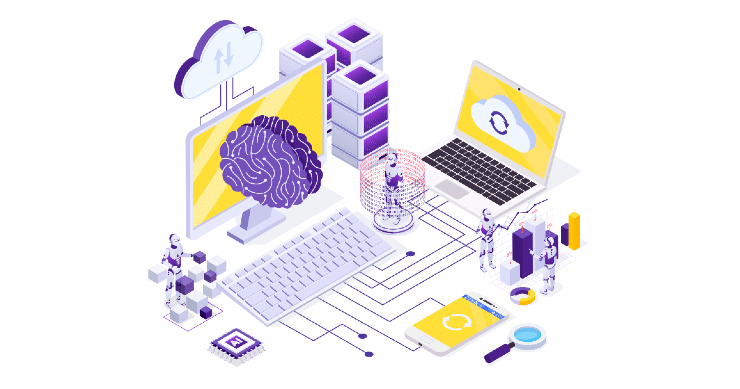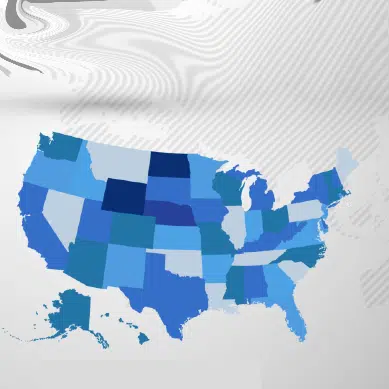Advancements in generative AI technologies, such as GPT-3 and DALL·E, have accelerated global AI adoption. While businesses implement AI to remain competitive in the market, they often overlook the security risks associated with AI.
AI risk management is identifying, assessing, and managing technical and non-technical risks inherent in AI systems. The NIST AI Risk Management Framework is one example of a framework that offers a structured approach to assist companies in assessing and mitigating risk in AI systems.
Generative AI risk management involves designing strategies to handle AI risks and ensuring the responsible use of AI systems that protect the company, clients, and employees from the negative consequences of their AI initiatives.

Technical AI Risks
Data privacy hazards
AI models, particularly those trained on huge datasets, may contain sensitive and personal information, including Personally Identifiable Information (PII). These technologies may mistakenly memorize and divulge sensitive information, resulting in privacy breaches and noncompliance with data protection requirements (such as GDPR).
Bias in AI models
Biases may be present in the training data used to build AI algorithms. This causes the AI model to generate erroneous and prejudiced results, which affect civil liberties, rights, economic opportunities, and communities.
For example:
- Bias in hiring and recruiting methods might lead to hiring just certain individuals.
- Bias in the financial lending business limits economic access to specific populations.
- Bias in educational access to specific sectors
Non-Technical Risks
Ethical and Human Risks
The employment of AI in the workplace creates various ethical considerations. For example, it can result in job layoffs for employees within the firm, and some of the data it generates may have racist outcomes. Furthermore, data may be collected without individuals’ consent.
(Read more on AI ethics.)
Business Risk
This category encompasses harm to an organization’s reputation and business operations. It also covers data and monetary damages.
AI systems can produce negative or biased results, harming the company’s reputation. Employees and internal stakeholders may lose trust in the AI system, while clients may lose faith in the organization. Of course, this can impact the company’s long-term revenue.
Regulatory Risk
As AI technologies advance (rapidly), the need for new AI legislation becomes more pronounced. Non-compliance with these regulations introduces a slew of legal, reputational, and monetary risks. Keep in mind that regulatory compliance may alter dramatically in the coming years.
Start Getting Value With
Centraleyes for Free
See for yourself how the Centraleyes platform exceeds anything an old GRC
system does and eliminates the need for manual processes and spreadsheets
to give you immediate value and run a full risk assessment in less than 30 days
Characteristics of Trustworthy AI Systems
According to the NIST AI RMF, the following characteristics are critical in developing AI systems that companies can rely on.
Valid and dependable
The NIST AI RMF asserts that AI systems should accurately do the tasks they were created for. Trustworthy AI systems are frequently tested through rigorous testing and ongoing monitoring to ensure their long-term stability.
Safe
The SAFE function stresses incorporating safety from the start when designing AI systems.
Secure and Resilient
Resilience allows AI systems to survive unanticipated changes, ensuring continuing functionality and safe deterioration as needed. Security goes beyond resilience and includes protection against unwanted access and use.
Accountable and Transparent
Ensure visibility. Everything about AI systems and their accomplishments must be transparent and open to anyone. This means that they can:
- Easily determine why the AI made specific decisions
- Request answers or accountability for what it does
Explainable and Interpretable
The framework ensures that the AI system’s functions are easy to grasp for users with varying levels of technological understanding, allowing people to learn how it works better.
Privacy-Enhanced
Under this paradigm, the AI system protects users’ privacy and data security.
Fair
The methodology contains steps to uncover and correct harmful biases, ensuring equitable outcomes of the AI system.
NIST’s AI Risk Management Framework
Let’s examine the essential functions of the NIST AI RMF.
To make the attributes mentioned above a reality, we need a defined set of activities and processes to follow. NIST identifies a set of functions that serve as a road map for applying these attributes in AI systems.
Govern
The GOVERN function is critical for all other stages of AI risk management. It should be integrated into the AI system lifecycle by creating a culture that acknowledges the hazards associated with AI from the highest levels of leadership to every operational department in the enterprise.
The governance function entails creating and implementing processes and documentation for managing risks and assessing their impact. Furthermore, the design and development of the AI system must be consistent with organizational principles.
Map
This MAP function provides context for using AI by identifying its intended purpose, organizational goals, business value, risk tolerances, and other interdependencies. It requires:
- Categorizing the AI system and outlining both its hazards and benefits.
- Understanding the broad implications of AI decisions and their interaction with AI lifecycle stages
Measure
The NIST AI RMF MAP function examines and evaluates the risks connected with AI using quantitative or qualitative risk assessments. AI systems must be tested throughout the development and production phases and against the previously defined trustworthiness criteria.
Manage
You will provide resources to address the identified AI dangers in this stage. It necessitates risk response, recovery, and communication planning, considering insights gathered from the governance and mapping processes.
Additionally, firms can improve their AI system risk management via systematic documenting, assessing emerging hazards, and implementing continuous improvement methods.
Soft Power in Generative AI Risk Management
While the AI Risk Management Framework (AI RMF) does not carry the legal weight of legislation, this only supports the framework’s underlying goal: AI Risk Management. The absence of legal binding enhances the effectiveness of AI risk management tools and AI risk management software.
Ultimately, the AI RMF relies on “soft power” to drive adoption and effectiveness, ensuring its scalability and relevance in an ever-evolving landscape of artificial intelligence governance.
Centraleyes is dedicated to helping our clients navigate the complex world of AI risk management. With leading global frameworks and regulations live on our platform, you can get started today!
Book a demo to learn more.
Start Getting Value With
Centraleyes for Free
See for yourself how the Centraleyes platform exceeds anything an old GRC
system does and eliminates the need for manual processes and spreadsheets
to give you immediate value and run a full risk assessment in less than 30 days





